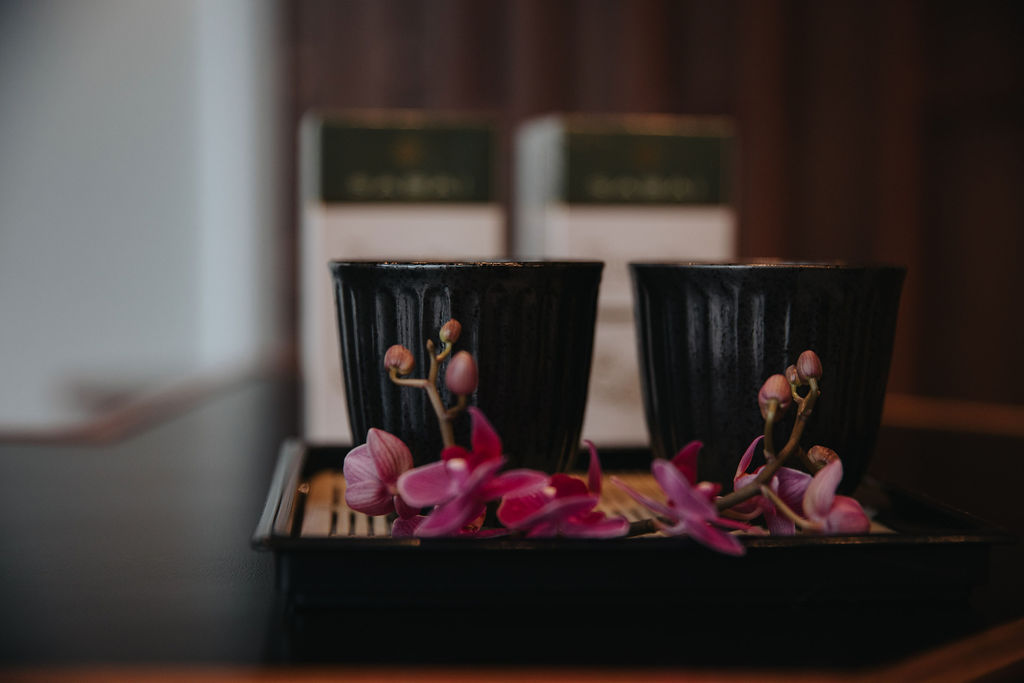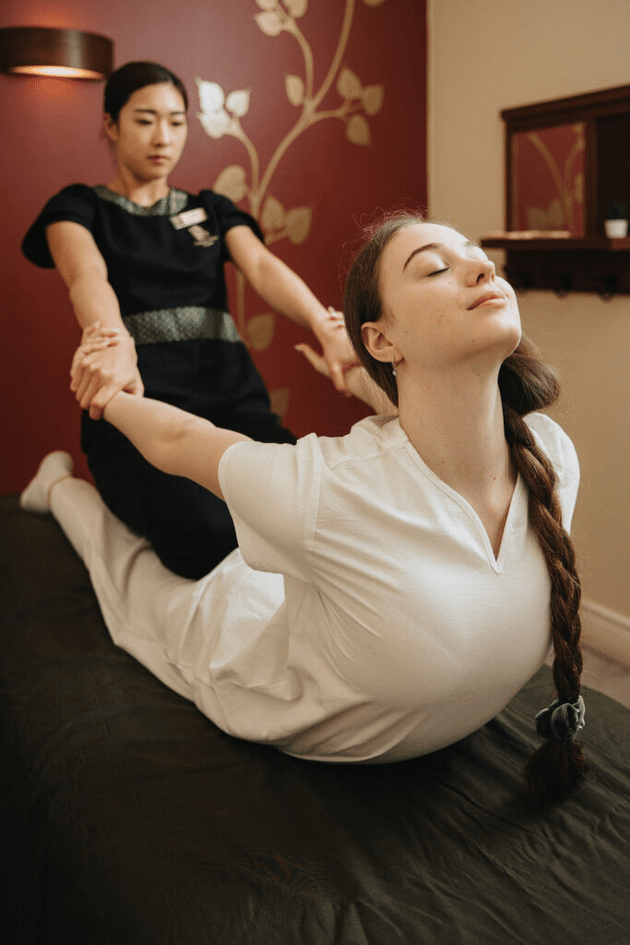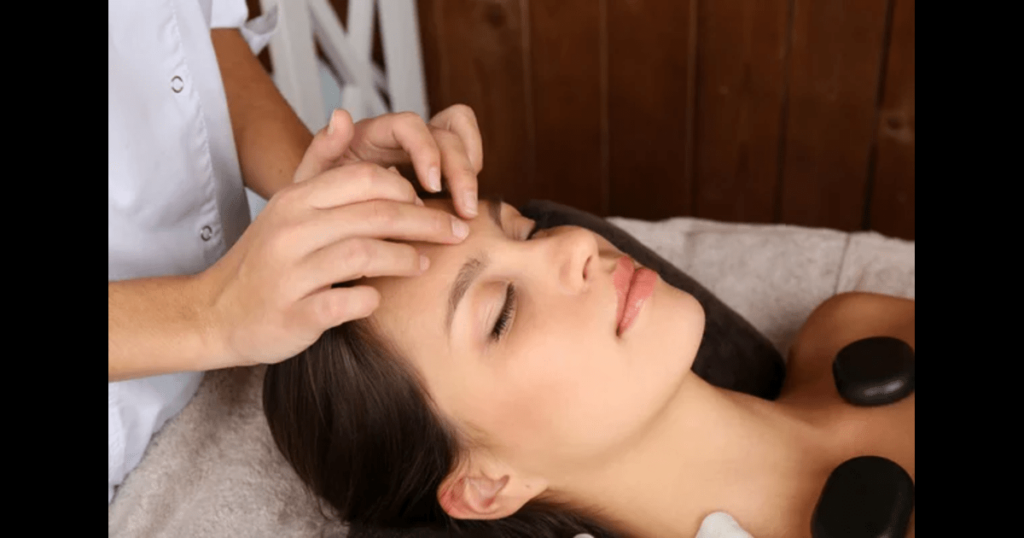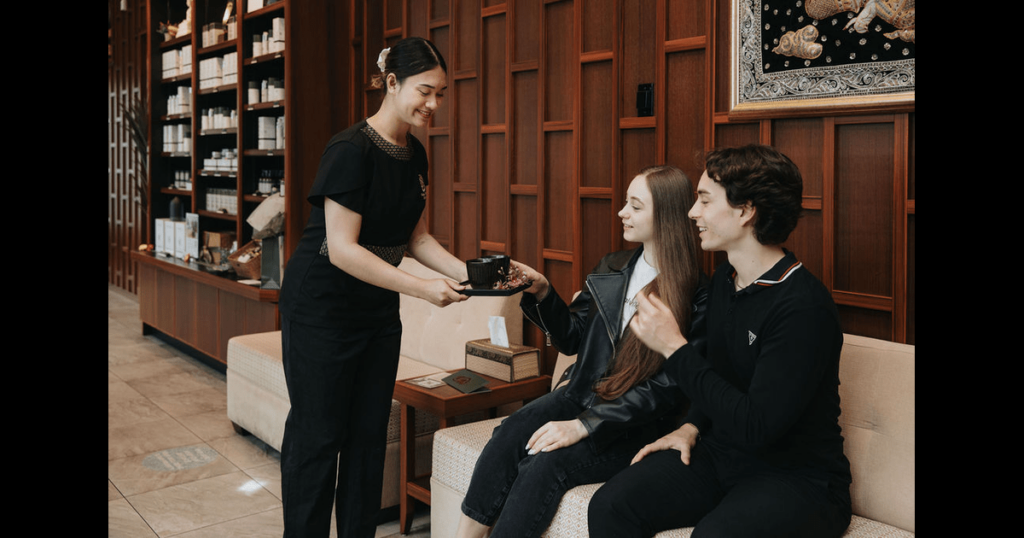When it comes to feeling better and caring for our whole body and mind, Thai yoga massage is a remarkable treatment many people love. It’s an old practice that has been around for thousands of years. This type of massage is different because it mixes stretching like yoga, pressing on specific body points, and working with the body’s energy.
Whether you’re stressed out, have sore muscles, or want to try something new for your health, Thai massage might be just what you need. Let’s learn more about this amazing massage technique!
What is Thai Massage?
Traditional Thai Massage, known as Nuad Boran, originated in Thailand over 2,500 years ago and is an age-old healing system. Unlike Western massage techniques primarily focus on manipulating muscles, Thai massage incorporates a holistic approach that addresses the body, mind, and spirit.
The Philosophy Behind Thai Massage
At its core, Thai massage is based on the concept of energy lines, or Sen, that run throughout the body. These lines are similar to the meridians in Traditional Chinese Medicine. The practice aims to balance and free energy flow along these pathways, promoting overall health and well-being.
Key Characteristics of Thai Massage
- Performed on a mat on the floor
- The recipient remains fully clothed
- Incorporates stretching, compressions, and rhythmic movements
- Uses no oils or lotions
- Emphasizes energy work and full-body alignment
Benefits of Thai Massage
The Thai massage treatment offers a wide array of benefits that extend beyond mere relaxation. Let’s explore some of the key advantages:
- Improved flexibility and range of motion
- Enhanced circulation and lymphatic drainage
- Reduced muscle tension and pain
- Boosted energy levels and mental clarity
- Stress reduction and improved sleep quality
- Better posture and body awareness
Physical Benefits
Thai massage techniques work wonders for the physical body. The combination of stretching and pressure helps to release muscle tension, improve joint mobility, and enhance overall flexibility. Many people find relief from chronic pain conditions, such as lower back pain, sciatica, and tension headaches.
Mental and Emotional Benefits
Beyond the physical realm, Thai yoga massage profoundly affects mental and emotional well-being. The rhythmic nature of the massage, coupled with deep breathing, induces a state of relaxation that can alleviate stress, anxiety, and depression. Many recipients report feeling a sense of renewed energy and mental clarity after a session.
Energetic Benefits
From an energetic perspective, Thai massage balances the body’s vital life force, known as “prana” or “chi.” By working along the Sen lines, practitioners help to remove blockages and promote the free flow of energy throughout the body. This energetic balancing can improve overall health and a greater sense of harmony.
Thai Massage Techniques
Now that we’ve explored Thai massage’s foundations and benefits, let’s dive into the techniques that make this practice unique and compelling. Thai Massage is known for its diverse methods, each contributing to the overall therapeutic experience.
1. Palm Pressure and Thumb Pressing
In Traditional Thai Massage, firm pressure is applied to specific points along the Sen lines using palms, thumbs, and feet. These “Sen points” help release tension, improve circulation, and stimulate energy flow.
2. Stretching and Joint Mobilization
Thai massage incorporates signature stretches similar to yoga poses. These stretches enhance flexibility, release tension, and promote better alignment. Often called “passive yoga,” the practitioner moves the recipient’s body into various positions, enabling a deeper stretch and greater flexibility.
3. Compression Techniques
Compression is an important aspect of Thai massage. Practitioners apply rhythmic pressure to muscles and soft tissues using their hands, forearms, elbows, and sometimes knees. The pressure varies based on the recipient’s comfort level and the specific area being worked on. This technique helps improve circulation, break up adhesions, and release deep-seated tension.
4. Energy Line Work
Working along the Sen lines is a crucial aspect of Thai yoga massage. Practitioners use various techniques to stimulate and balance these energy pathways, including:
- Finger walking: using fingertips to “walk” along the energy lines
- Palm pressing: applying broad pressure with the palm along the Sen
- Thumb rolling: using the thumb to apply pressure in a rolling motion
By addressing these energy lines, Thai massage aims to promote overall health and vitality throughout the body. The concept is similar to acupuncture but without the use of needles. Instead, pressure and movement are used to influence the flow of energy.
5. Rocking and Vibration
Gentle rocking and vibration movements are often incorporated into Thai massage sessions. These techniques help relax the body, release tension, and promote harmony and balance.
Rocking techniques might include:
- The gentle swaying of the entire body
- Rhythmic rocking of limbs
- Subtle vibrations applied to specific muscle groups
These movements are believed to help release tension on a deep level and can be particularly soothing for the nervous system.
6. Reflexology-Inspired Foot Work
Thai massage often includes focused work on the feet, drawing inspiration from reflexology. Practitioners may use their thumbs, knuckles, or specialized tools to stimulate reflex points on the feet, which are believed to correspond to various organs and systems in the body.
Foot techniques might include:
- Thumb walking across the soles of the feet
- Pressure point work on specific reflex areas
- Stretching and mobilization of the toes and ankles
This footwork is relaxing and, due to the interconnected nature of the reflex points, is believed to have far-reaching effects on the entire body.
7. Rhythmic Pressing and Releasing
A unique aspect of Thai massage is the rhythmic nature of many of its techniques. Practitioners often apply pressure in a pulsing or wave-like manner, which can help to:
- Encourage deeper relaxation
- Improve circulation in a gentle, non-invasive way
- Stimulate the lymphatic system
- Promote a meditative state in both the giver and receiver
This rhythmic quality is part of what makes Thai Massage so distinctive and compelling.
Combining these techniques, Thai massage creates a comprehensive treatment that addresses the body on physical, energetic, and even emotional levels. The result is a deeply therapeutic experience that can leave recipients feeling invigorated and deeply relaxed.
Thai Massage for Specific Conditions
While Thai massage offers general benefits for overall health and well-being, it can also benefit specific conditions. Let’s explore how Thai yoga massage can address specific issues:
Relieving Lower Back Pain
For those suffering from lower back pain, Thai massage offers a range of techniques that can provide relief:
- Gentle stretching to improve spinal flexibility
- Targeted pressure point work to release muscle tension
- Hip-opening stretches to address imbalances that may contribute to back pain
Easing Tension Headaches
Thai massage can be an effective treatment for tension headaches:
- Neck and shoulder releases to alleviate muscle tension
- Scalp and facial massage to promote relaxation
- Energy line work to balance the flow of energy to the head and neck
Improving Sleep Quality
For those struggling with sleep issues, Thai massage can help by:
- Promoting deep relaxation and stress relief
- Balancing the body’s energy to support natural sleep cycles
- Releasing physical tension that may interfere with comfortable sleep
What to Expect from a Thai Yoga Massage Session
For those new to Thai yoga massage, the experience can be quite different from other forms of massage. Here’s what you can typically expect during a session:
Setting the Stage
When you arrive at a reputable establishment like Sabai Thai Spa, you’ll be greeted by a calm and soothing atmosphere. The massage takes place on a comfortable mat on the floor, allowing for a full range of movement and stretching.
Attire and Preparation
Unlike traditional Western massage, you’ll remain fully clothed during a Thai massage. It’s recommended to wear comfortable, loose-fitting clothing that allows for easy movement. The practitioner may provide you with special garments if needed.
The Massage Experience
The Thai massage treatment typically begins with the practitioner assessing your energy and physical condition. They may start with gentle compressions and stretches to warm the body before moving into more intensive techniques.
Throughout the session, you’ll experience a combination of:
- Rhythmic compressions
- Deep stretches
- Point pressure along energy lines
- Gentle rocking and vibration
The practitioner will use their hands, forearms, elbows, knees, and feet to perform various techniques. They may also guide you through yoga-like stretches and postures.
Duration and Flow
A typical Thai massage session lasts 60 to 120 minutes. The practitioner works on the entire body, often starting at the feet and moving upwards. The flow of the massage is designed to be both refreshing and deeply relaxing.
Post-Massage Care
After your Thai yoga massage, taking care of yourself is crucial. Here are some tips:
- Drink plenty of water to help flush out toxins
- Take some time to rest and integrate the experience
- Avoid strenuous activity for the rest of the day
- Pay attention to any changes in your body or energy levels
Transform Your Well-being with Authentic Thai Massage – Book Your Session Today
As we’ve explored the rich tapestry of Thai massage techniques, it’s clear that this ancient practice offers a unique and powerful approach to health and wellness. Thai yoga massage is a holistic treatment that nurtures the body, mind, and spirit, from its ability to relieve physical tension and pain to its profound effects on mental and emotional well-being.
For those seeking to experience the transformative benefits of Thai massage, we invite you to visit Sabai Thai Spa. Our skilled practitioners are dedicated to providing authentic and effective Thai massage treatments tailored to your needs. Whether you want to address specific health concerns or indulge in deep relaxation, our team at Spa West Vancouver is here to guide you on your wellness journey.
Embrace the ancient wisdom of Thai massage and discover a new level of balance, vitality, and inner peace. Book your Thai massage session with us today and take the first step towards holistic well-being.






